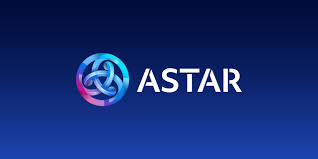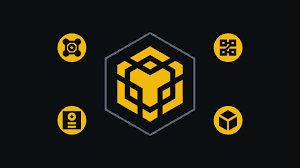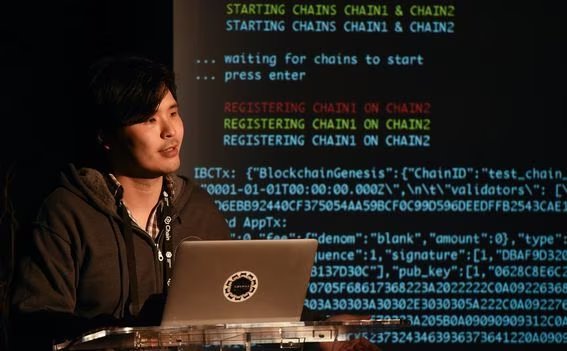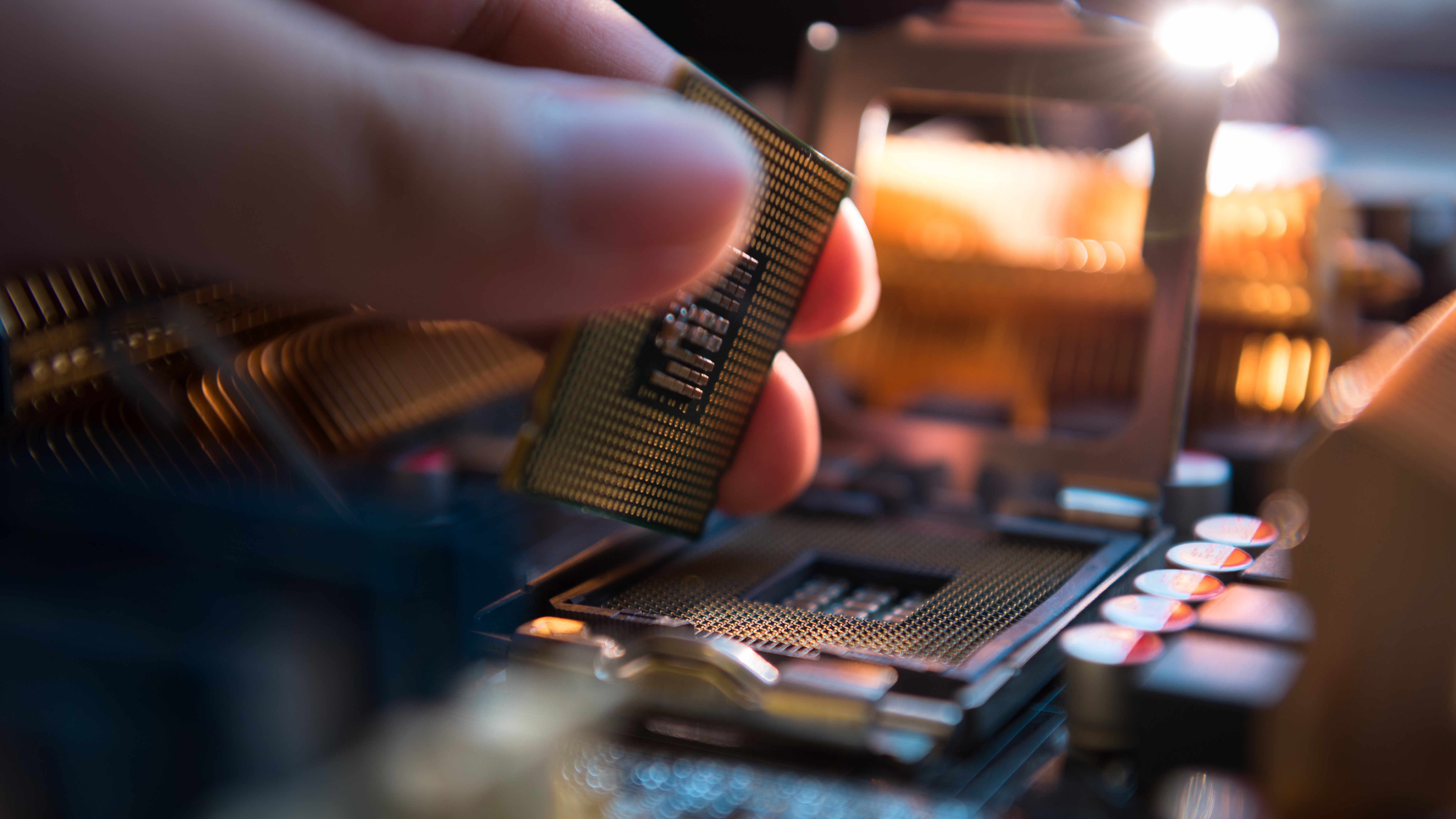TL;DR: With a new update or project being released almost every day, it’s clear the crypto ecosystem is constantly evolving. Polkadot has gone through a lot of ups and downs to reach the level it’s at today — but it’s just the beginning. Knowing what brought it here and why it was created will lead you to make better decisions when investing or simply using Polkadot.
In this article, we’re gonna dive into the Polkadot ecosystem, answer all the $DOT related questions and even more. Prepare yourself for a history lesson and a journey to the future of Polkadot!
What is Polkadot (DOT)?
Polkadot is a Layer 1 blockchain created in 2016 by Gavin Wood. It is a fully sharded blockchain that enables unprecedented interoperability.
Interoperability is defined as the capacity of a blockchain to communicate with other networks in a secure and seamless way. In general, blockchains are separated with each other due to their consensus and internal architecture. This makes asset transferring between them extremely difficult and often leads to liquidity fragmentation.
To solve this problem, Polkadot uses a sharding technique to enable the creation of specialized blockchains to communicate in a trustless environment.
The concept of sharding has been first introduced by Ethereum in 2015. Sharding is a process in which the whole blockchain is split into smaller blockchains aka shards. Because each shard contains its own data, it makes it unique and independent from other shards. As a result, each shard can separately process more data.
At the time, blockchains had to make a tradeoff between decentralization, security and scalability. This problem has been coined as the “blockchain trilemma.” Each blockchain that has emerged since then had its architecture influenced more or less by the blockchain trilemma.
Some networks traded decentralization to achieve security and scalability, while others traded security to achieve decentralization and scalability. Ethereum chose to trade scalability for decentralization and security.
Using this innovative method, blockchains can process exponentially more transactions without compromising data availability. Recently, more projects have focused their attention on sharding, each with its own implementation.
Polkadot approaches sharding from a simpler perspective on the blockchain. The network is made out of two major components: the Relay Chain and parachains.
The Relay Chain is the main chain of the ecosystem. Its main task is to coordinate the components of the chain, which includes parachains.
Parachain is the term used to describe shards in the Polkadot ecosystem. They are independent blockchains that construct and propose blocks to validators on the Relay Chain. The only function of the Relay Chain is to provide security, which makes it a highly robust system.
The consensus mechanism that Polkadot uses is called Nominated Proof of Stake. Proof of Stake means that Polkadot gets its security from validators that stake $DOT to secure the chain. This is different from Proof of Work blockchains, where miners replace the role of validators.
The concept of blockchains is not new, and Polkadot is one of many such networks. The idea started in 2007 with the release of Satoshi Nakamoto’s Bitcoin Whitepaper. This kicked off the subsequent creation of many different types of networks under the same “blockchain” terminology. Despite being similar in concept blockchains have all different architectures and use cases. What all have in common — including Polkadot — is that they have to be secure.
Security is the ability of a blockchain to prevent attacks and penalize malicious actors. This is usually done through their consensus algorithm and the mechanism they use to reach finality. Finality is achieved when a block has been created and is now immutable, meaning that nobody can change the date inside.
Over time many different mechanism have been designed, ranging from Proof of Work, Proof of Stake to novel ones called Proof of Spacetime Each one hopes to achieve the best way of securing the network they are built for. As noted before, Polkadot makes use of type of consensus mechanism we call “Nominated Proof of Stake” — or NPoS for short.
Polkadot has been created with the goal of being a more interoperable alternative to Ethereum. The blockchain has been created in 2014 and introduced the concepts of smart contracts. These are small applications that run inside a virtual machine called the Ethereum Virtual Machine.
The EVM allows for a blockchain to process more than simple token transfers. To give more info, it opened up the possibility to run applications in a decentralized manner. Applications usually run in the cloud or on your computer, so running them on a blockchain was unheard of at the time. This makes them uncensorable (nobody can stop them) and ensures they’re always online — as long as the chain they run on is processing transactions.
Polkadot takes on the smart contracts implemented by Ethereum and creates a more powerful framework called Substrate. While similar to Ethereum, it implements a some new improvements to the protocol.
While developing the Polkadot blockchain, Gavin Wood and his team discovered a problem: developing a blockchain from scratch was complicated, which hindered a lot of projects from taking on this endeavor. Therefore, Gavin and the team decided to refine Polkadot’s development experience into a blockchain development framework — Substrate.
Substrate takes all the components used on the blockchain (consensus, accounts, tokens, governance, and on-chain treasury) and gives developers the options to choose which of these elements they want to integrate to their blockchain. The end result is a robust blockchain that can easily be created for any specialized use case. A network created using Substrate can be connected to Polkadot as a parachain.
As previously mentioned, the Polkadot Relay Chain is responsible for the network security of multiple parachains. Parachains wanting to access the Polkadot Relay Chain need to use $DOT to bid for slots, and the lease period ranges from 6 months to 2 years. This use case places DOT as the central part of the Polkadot ecosystem.
DOT is an inflationary token due to the way its tokenomics have been planned. With every new parachain slot auction, more $DOT is locked up or bonded, theoretically removing those tokens from circulation for the duration of the lease.
The tokenomics of Polkadot also specifies an infinite token supply. But its outstanding supply can be calibrated in three ways: staking by Relay Chain validators, staking by nominators who contribute their $DOT to the validators of their choice, and bonding to parachains.
So far, staking has locked up at least half of the total DOT supply. However, determining the $DOT inflation rate is tricky because of the parachain lease periods vary. In addition, users have no way of knowing how much DOT will be locked in future auctions. Future decisions regrading tokenomics will be addressed via community governance.
For more details about how you can earn more Polkadot by running a validator node at home check out our Polkadot Mining & Staking guide. It includes the exact steps and best methods of earning more crypto like $DOT in 2024 and beyond.
When was Polkadot (DOT) created?
Polkadot (DOT) was created after Gavin Wood decided to leave Ethereum to pursue his vision of a decentralized web. Work began on the Polkadot chain in 2017, but before that, a couple of important events happened. Most events revolve around the Polkadot CEO and co-founder, Dr. Gavin Wood.
The first meaningful event is the moment Gavin Wood came up with the concept of Web3.
Gavin was long interested in economics and game theory. In his teens, he even published his own board game called “Milton Keynes.” The game was similar to Monopoly in the sense that players collected income from their buildings and had to buy plots of land from farmers. It was also the element of political influence that enabled participants to play dirty tricks on their opponents.
Dr. Wood also created a concept game called “Fractal Playground,” which is playable to this day. His experiments with voting mechanisms led him to create yet another concept called “The Localized Proportional Representation Voting System.”
Gavin heard about Bitcoin in 2011, but he admitted he was not interested in the idea because it was focused on currencies rather than technology. It wasn’t until 2013 when Gavin Wood met Vitalik, who described to him the vision of Ethereum. From that moment, Gavin saw the opportunity to combine blockchain with governance and create an impactful project. He immediately agreed to help Vitalik code Ethereum.
The term “Web3” was first used in a blog post published on April 17, 2014. Gavin’s thesis was that entrusting our information to arbitrary entities on the internet was fraught with danger. He quoted the loss of trust in centralized entities based on Edward Snowden’s exposure of NSA spying on its citizens.
Web2 led to the creation of rich cloud-based apps such as Google’s Drive, Facebook and Twitter, not to mention countless other apps like games, shopping, banking and dating. However, for the sake of the society, these apps had to be re-engineered to better reflect the evolution of the world.
Web3, or the "post-Snowden" web, is the reimagining of all the existing apps that we already use in Web2. The fundamental difference is how we interact with those dapps. Information that we assume to be public, will be published. But the information we agree to be private, remains private.
The biggest impact of blockchain technology lies in the strong cryptography and decentralization. Cryptography ensures only the holder of the private key can decode the message. The cryptographic guarantees can be so strong that no government entity on Earth can break it.
The first hints of decentralization emerged with BitTorrent, where each network participant stored a copy of a file that can be shared with others. Even if one machine got compromised, access to the information couldn’t be stopped as participants were distributed all over the globe.
With the creation of Ethereum, Gavin added a third component that made Web3 possible: the consensus. In a traditional web, all the information is stored by a centralized entity that can decide unilaterally what to do with the data. Moreover, government entities know exactly where to go and impose their will on the data safekeepers.
In a decentralized network, there needs to be a set of rules that everyone agreed with, hence the need for a consensus mechanism. If all network participants can agree, then they can all trust that the information hasn’t been tampered with.
Another meaningful event was the creation of Parity Technologies followed by the conceptualization of Polkadot.
In 2016, after Gavin left Ethereum, he expanded his focus on the Web3 vision with EthCore. After Ethereum was launched, excitement grew around the blockchain sector, which made funding very appealing to VCs. The project quickly raised $750,000 and gathered 60 programmers to work on its first Ethereum client, called Parity.
Over the span of two years, EthCore evolved into Parity Technologies, a decentralized web blockchain infrastructure company. At Parity, Dr. Wood came with the idea of a series of projects to innovate the Dapp landscape. One of them is Substrate, a flexible technology stack that allows users to build their blockchain from scratch, with minimal effort.
At that time, Ethereum was working to implement sharding in order to scale, but Gavin wanted something better. After considering the obstacles of sharding that a blockchain would inevitably face, Gavin Wood spent four months to develop the vision for an interoperable blockchain. This is how Polkadot Protocol was born.
What the Polkadot team created can be categorized as a new “heterogeneous multi-string framework.” This is due to its internal architecture, implementing some novel methods of achieving interoperability.
Until that point, consensus and execution were done on a single blockchain. An important difference is that Polkadot incorporates both of these elements, but they are structured in such a way that blockchains can scale much faster.
To solve the issues they saw and provide a system that is able provide flexibility, the Polkadot founder had to come up with a new solution. This solution is known today as the Polkadot chain, powered by its sharded architecture and Nominated Proof of Stake consensus.
The team’s invention was built to enable interoperability between many specialized blockchains, while leaving the coordination function to the Relay Chain.
Polkadot’s architecture enables parachains to communicate each other via the Relay Chain. The shared security places the Relay Chain at the heart of Polkadot’s security, removing the overhead from dapp developers to design their own security mechanism.
After validating their idea, Gavin Wood together with the team at Parity began building today’s Polkadot blockchain and codebase. Later on, the team launched the $DOT token. The $DOT token was sold only through a private sale first, and then a public one. The private sale brought in $43 million in less than 72 hours to accelerate the growth of Parity Technologies. The next sale was a massive success, bringing in $140 million from retail investors. Such a huge investment has allowed Polkadot to continue building the vision of a scalable and interoperable blockchain.
Who created Polkadot (DOT)?
Polkadot was created by Gavin Wood together with Robert Habermeier and Peter Czaban after leaving Ethereum.
Gavin Wood is a computer scientist born in Lancaster, England. He worked as the CTO of Ethereum and now serves as the chairman of Parity Technologies.
Gavin’s connection with tech started at 9 years old when his mother gifted him a computer. His neighbor taught him how to program, and since then Gavin’s interest in programming has started. Gavin Wood studied at the University of York between 1998 and 2002, where he graduated with a Master Computer Systems and Software Engineering. In the following years, he completed his PhD entitled "Content-based visualization to aid common navigation of musical audio" in 2005 at the same university.
Gavin Wood started his career working as a programmer at several firms. Over time, he advanced from a simple developer to the CTO position at 0xLegal, a startup that wrote software allowing improved drafting of legal agreements in Microsoft Word.
In addition to programming, Gavin has long been interested in economics and game theory. He has developed a strategy board game called Milton Keynes and created the Fractal Playground and Localized Proportional Representation voting system. He also proposed a new voting system for the Supreme Court of the United Kingdom, but in the end, they did not want to change the voting system.
His first contact with crypto was in 2011, after hearing about Bitcoin. Two years later, he revised the whitepaper again and began to realize new possibilities between fields of programming and game theory. His thoughts on governance also influenced Polkadot’s design ideas.
One of his most important projects was Ethereum. In 2013, Gavin met Vitalik Buterin through an old friend. After listening to Vitalik’s ideas on Ethereum, he decided to help Vitalik write the code for the project. In 2014, Gavin went to Miami and founded Ethereum with Vitalik and 7 other co-founders.
At the condo in Miami, Gavin developed the first operational Ethereum implementation, generally referred to as the Ethereum “Proof of Concept 1” or Alpha version. After that, Gavin acted as the first CTO of Ethereum and wrote the “Ethereum Yellow Paper," in which the Ethereum Virtual Machine (EVM) was defined. This was the first official specification of the blockchain state machine.
In the next two years, Gavin was the lead developer of Ethereum — he designed the general platform architecture, the majority of the C++ Ethereum client, and the initial design of Solidity, which is the language Ethereum smart contracts are coded in. Thanks to Gavin’s capabilities, Ethereum went live on July 30, 2015.
In 2016, Gavin left Ethereum and founded EthCore. He gradually gathered more than 60 developers from 15 countries, and EthCore later become Parity Technologies, which wrote the Ethereum Parity client in Rust, a far more powerful language than Geth and C++ clients.
To this day, nobody knows why Gavin Wood left Ethereum. Some speculate that Gavin and Vitalik had divergent views on the development path of Ethereum. In some interviews, Gavin mentioned that he disagreed with Vitalik on governance aspects, and he thought that the fact that ETH is the only allowed gas token has made Ethereum deviate from becoming a free competition decentralized platform.
In 2016, Gavin Wood published Polkadot’s white paper, describing Polkadot’s “heterogeneous multi-chain” architecture. After that, he led Parity to embark on the development of Polkadot. In his journey to create Polkadot, Gavin was aided by Robert Habermeier and Peter Czaban.
Robert Habermeier aka “asynchronous rob,” was 18 at the time Polkadot was created. As a young prodigy, he abandoned formal education and pursue the path-less-trodden in co-founding Polkadot. Rob has been spending his time at Parity Technologies heading up the Polkadot project and focusing particularly on the underlying consensus algorithm.
In 2018, Peter Thiel Foundation announced the 2018 class of Thiel Fellows, and Robert Habermeier has been selected as a recipient. He received $100,000 over the next two years to continue his work at Polkadot, as well as mentorship from the foundation’s large network of entrepreneurs, inventors, and scientists.
The third co-founder of Polkadot, Peter Czaban, was previously working at Parity Technologies. Peter worked on decentralized protocols with both public and consortium applications in mind. He primarily worked on consensus algorithms, coming up with a simple consensus algorithm Aura and smart contract-based validator selection mechanism, both of which have been used for many live applications.
Peter worked as the CTO of Web3 Foundation for 3 years and 2 months before moving on to his own project, Open Reviews Association. ORA is a non-profit stablished to build a global Open Data Ecosystem for online customer reviews.
Gavin mentioned that the vision of Polkadot was to make “blockchain great again.” The statement may sound a bit self-assured, but the implementation speaks for itself. Polkadot tries to solve several fundamental problems in the blockchain industry: scalability in performance, flexibility in architecture design, and upgradability in governance.
Polkadot’s initial concept adopts the “heterogeneous shared multi-chain” architecture of “one relay chain + multiple parachains”. The relay chain is responsible for the consensus part and ensures the safety of all parachains.
Each parachain is an independent blockchain that can run in parallel, thereby improving scalability. At the same time, each chain can have its own business logic, focusing on solving problems in a specific field. Parachains are very flexible in terms of development, and even public blockchain with different consensuses such as Bitcoin and Ethereum can be brought in through bridges.
The initial roadmap already had these features in mind. It was a matter of testing the implementation in the real world. To make sure the parachains rollout will be a success, Gavin and the team later created Kusama, a testing ground for projects looking to earn a parachain slot.
How is the Polkadot (DOT) token used?
The DOT token is the native token for the Polkadot network. Most assets in the Polkadot ecosystem are denominated in DOT, which makes it the default unit of account.
The primary function of DOT is to give token holders governance over the platform. Some functions that are included under the governance mechanism include determining the fees of the network, the addition or removal of parachains, and exceptional events such as upgrades and fixes to the Polkadot platform.
DOT is the fuel that powers transactions and block creation on the Polkadot chain. We sometimes refer to it as “gas”. Its primary use case is securing the network and keeping actors aligned to the same principles. Making a transaction on the Polkadot network requires a small fee in DOT, usually between 0.0157 and 0.0157 DOT.
Because Polkadot has a quick time to finality and processes more transactions per second the gas fees quickly add up. This small fee is paid by users and goes to validators for doing their work. To ensure consensus, token holders will stake their DOT.
In 2021, Parachain Slot Auctions went live. Polkadot has made available 100 parachain slots that projects can lease over a period of 96 weeks in order to become part of the Polkadot ecosystem.
Projects looking to secure a parachain slot will have to lock in $DOT via crowdloans. Contributions will be locked over the duration of the lease. After the duration of the lease has expired, the tokens are unlocked and the parachain is removed.
Parachains have their transactions included by the Relay Chain, which comes with all the security guarantees and interoperability that Polkadot offers. Therefore, parachain auctions incentivizes high-value projects to participate, as it gives the bigger chances of securing their next lease.
Polkadot is currently listed on multiple exchanges. The major ones are
The Kusama network is powered by its native token, called KSM. With KSM participants can validate, nominate validators, bond parachains, and vote on governance referenda. Users who participated at the DOT sale from 2018 received the exact amount in KSM.
In order to get off the ground with a soft launch, Kusama had begun as a PoA (proof-of-authority) network with validator nodes run exclusively by Web3 Foundation (without compensation). This period would last sufficiently long to allow at least 50, ideally 100 well-backed validators to be bonded and ready.
On the day of the launch, the governance system also came into effect for Kusama. Its governance mimics the Polkadot governance except for two governance mechanisms: Oracle Committee and Spontaneous Subject Committees.
Polkadot in 2020
2020 was Polkadot’s mainnet year. The launch of Polkadot v1 began May 26 with the Relay Chain genesis block and finished in December 2021 with the launch of parachains.
The first phase of the network started as a Proof of Authority network which is a consensus mechanism that gives a small number of validators full control over the network. It was maintained by 6 validators that were controlled by Web3 Foundation. Meanwhile, users were able to claim their DOT tokens and stake them.
During this phase, users' staking only meant signalling their intention to be a validator or nominator. The Foundation used this as a metric to know when there were enough validators to remove some control over the network and into the hands of the DOT holders.
Once there was enough signal from the validators, phase 2 commenced. This would entail a transition of the network from PoA to Nominated Proof of Stake (NPoS). This phase marked the first efforts to decentralize the network further.
Starting July 20, the governance module had been activated. Soon after, the network started electing Council and Technical Committee members and started accepting public proposals. From this point on, Polkadot was governed by DOT holders.
On August 18, balance transfers have been activated. This meant DOT holders could transfer tokens between their accounts.
The hype was picking up as Polkadot was nearing its mainnet launch. More than 200 projects had received funding from grants and treasuries, as they prepared to participate in the parachain auctions. Out of the 1.02 billion DOT which exist within Polkadot, 63% had been locked into the staking system.
Polkadot in 2021
2021 was Polkadot’s best year to date, reaching an all time high of $55. This was heavily influenced by a few key events and updates.
On June 22, the first parachain auctions went live on Kusama. The first parachain to launch was Statemine, a common-good parachain that be used to deploy generic assets such as stablecoins, NFTs and even CBDCs. Unlike the regular auctions, Statemine’s slot was granted via governance vote.
The highest bidder for the first auction was Karura, a DeFi hub for Kusama and Acala’s sister network. The project began successfully producing blocks within just three hours of the auction’s close. Acala is a cross-chain decentralized finance DeFi hub for the Polkadot ecosystem, whereas Karura will serve the Kusama community.
Within 2 months, Kusama had completed its first batch of 5 parachains. The first 5 winning projects were: Karura, Moonriver, Shidena, Khala, and Bitfrost. Kusama was very much a proving ground for these projects. Features implemented on Kusama would end up on Polkadot network.
December 18 kickstarted the parachain auctions on Polkadot, where users could lock their DOT tokens to support their favorite project. The same mechanism has been in place with Kusama, who had already onboarded 18 parachains.
Moonbeam won the first slot on Polkadot with a record $1.4 million (35 million DOT) raised from over 48,000 contributors. Acala won the second parachain auction on Polkadot, followed by Parallel Finance, Astar and Clover Finance.
By the end of the year, Polkadot had amassed some amazing stats. More than 297 validators were in place to ensure the security of the network. The various parachains on Polkadot and Kusama had almost 3 million user accounts created and were being run by 6,000 validators.
Polkadot in 2022
The current year has been a powerful one for Polkadot. With the release of parachain auctions, Polkadot has accomplished its vision of an interoperable blockchain. The next chapter is to help its parachains grow in adoption.
Polkadot has added its second common-good parachain, named Encointer. Its team had developed a framework that enables any geographically concentrated group of people to create, distribute and use their own digital community tokens.
Such tokens can be distributed regularly to active participants at no cost, functioning akin to universal basic income, but with no government involvement required. This could foster local economic activity in communities where individuals have skills and products to sell, but lack the money to trade them.
Another improvement was the introduction of a staking dashboard. This app offers a more intuitive experience compared to Polkadot-JS apps developer tool. DOT token holders now have an easy way to stake and delegate natively on Polkadot.
It also provides convenient data about the validators and relevant statistics that could affect nomination choices. Users can now sort validators by commission rate and exclude inactive validators, oversubscribed and blocked validators, validators charging 100% commission, and validators without an on-chain identity.
On July 20, Polkadot introduced its next-generation governance system, called Gov2. The biggest improvement is that every token holder can now start a referendum at any time. Anyone can also vote on these referenda. There are no explicit limits on the number of referenda which are open to vote on at any time.
The old governance body has also been replaced. Specifically, the Technical Committee has been replaced with the Polkadot Fellowship, a mostly self-governing expert body o the technical matters. The Fellowship cannot modify the protocol unilaterally, as the entire community remains involved — all they can do is delay the decision making. The implementation of Gov2 is ongoing, and it’s expected to launch somewhere in 2023.
Towards the end of the year, Polkadot has made staking on Polkadot much easier thanks to a new scalability feature for Polkadot’s staking system. Now, anyone with as little as 1 DOT can receive rewards for staking natively on Polkadot.
Crucially, the update also reduces the incentive to stake through third-party services and intermediaries. By cutting out the middleman and staking natively (directly on the Relay Chain) DOT holders can help keep Polkadot secure and decentralized while receiving competitive rewards of up to 18%.
Unexpectedly, Gavin Wood has stepped down from his role as the CEO of Parity Technologies. Wood said that his skillset is better suited for more hands-on actives such as coding and design. In other words, Gavin Wood will still be involved in Polkadot, only he will be more focused on the technical side as the new chief architect. Björn Wagner, the co-founder of Parity Technologies, will step into the position of CEO.
Polkadot is in a constant growth cycle, and network participants like us can earn more $DOT without too much hassle or technical knowledge, right from the comfort of our homes.
Learn how to do that in our Polkadot Mining & Staking guide, which includes the exact steps and best methods of earning more crypto like $DOT in 2022 and beyond.



































































